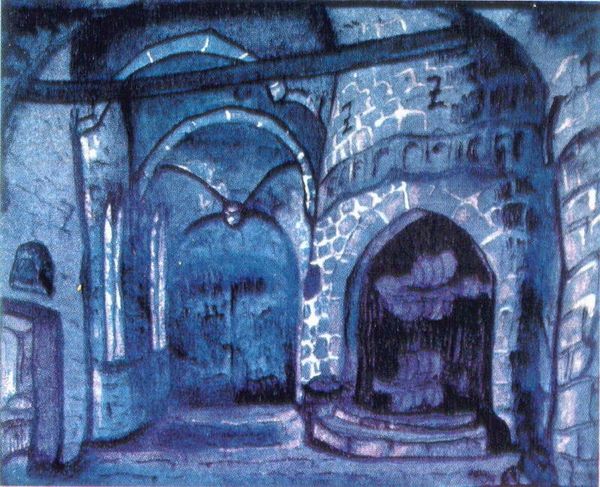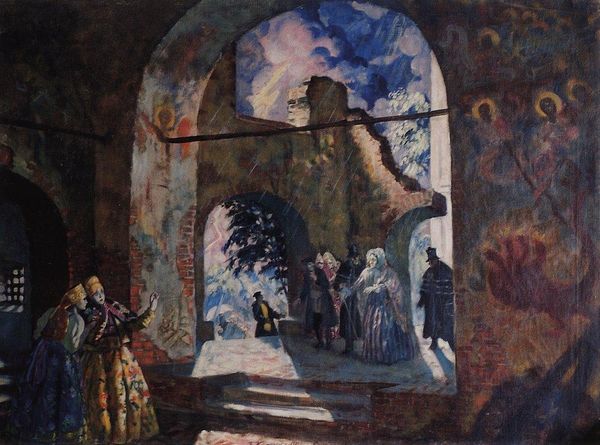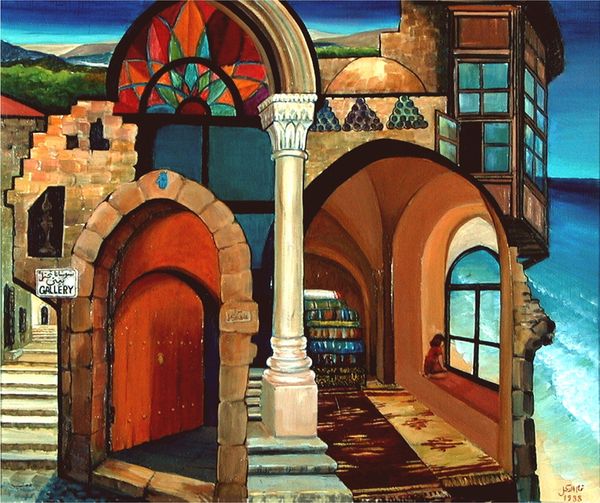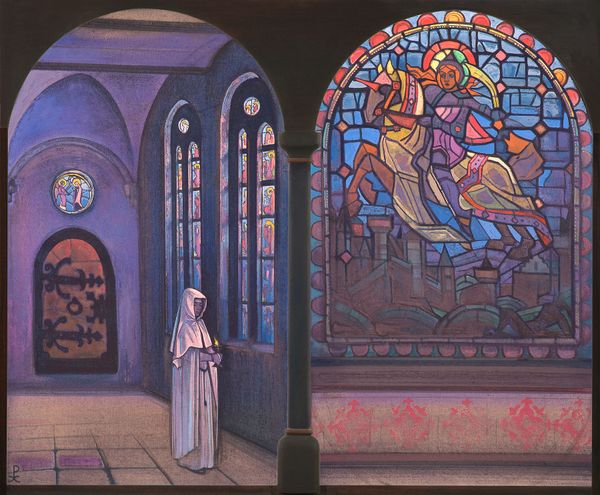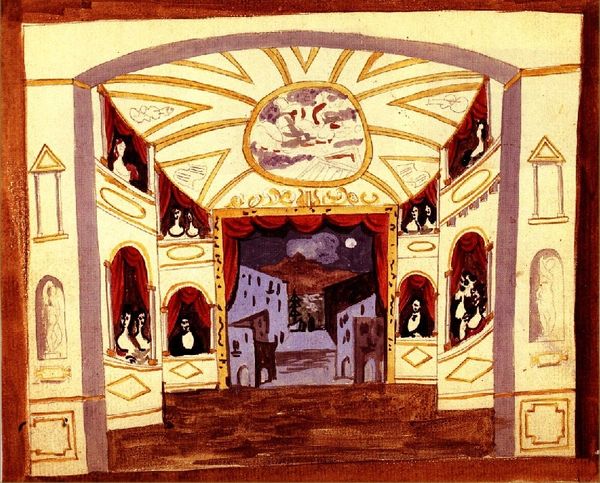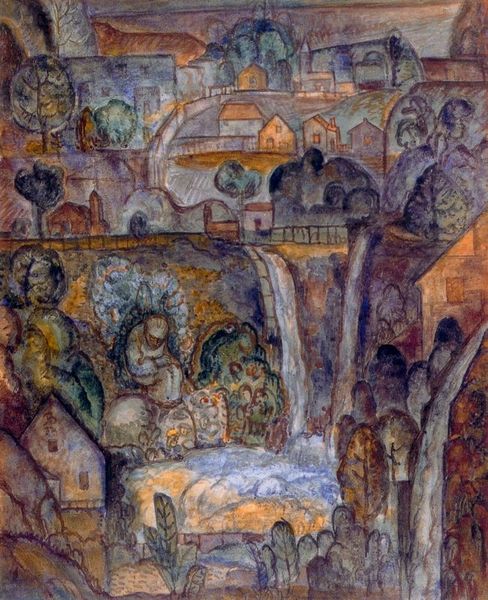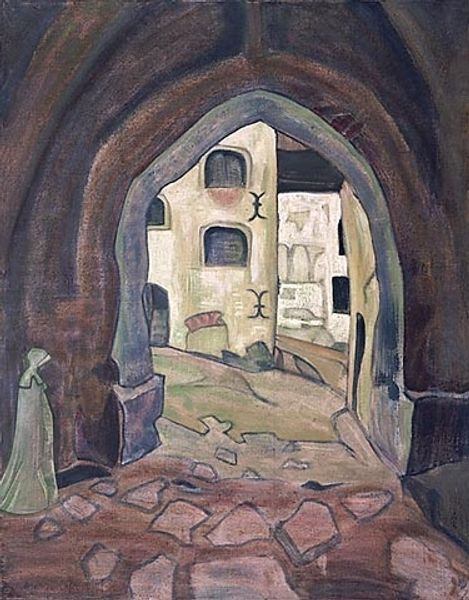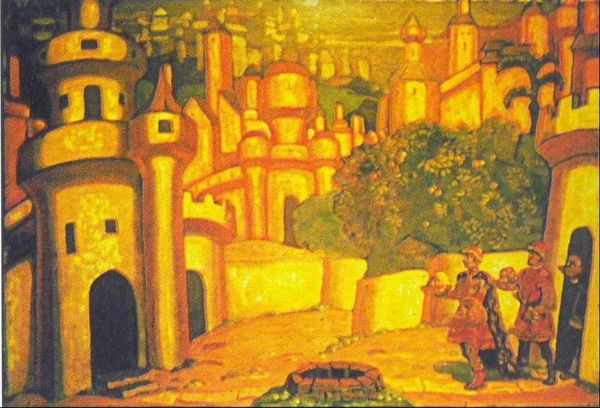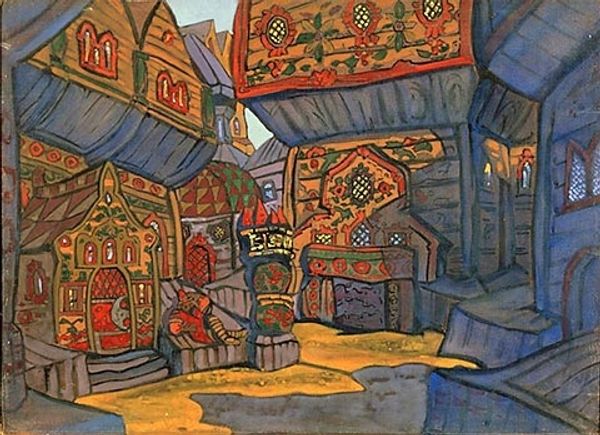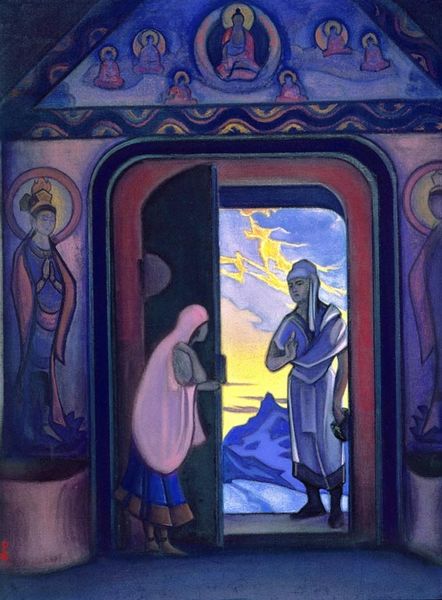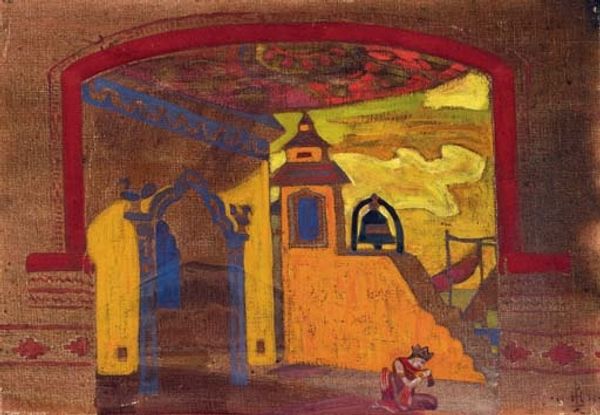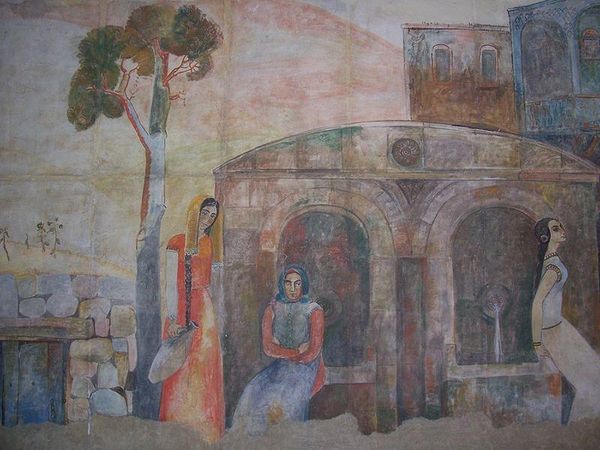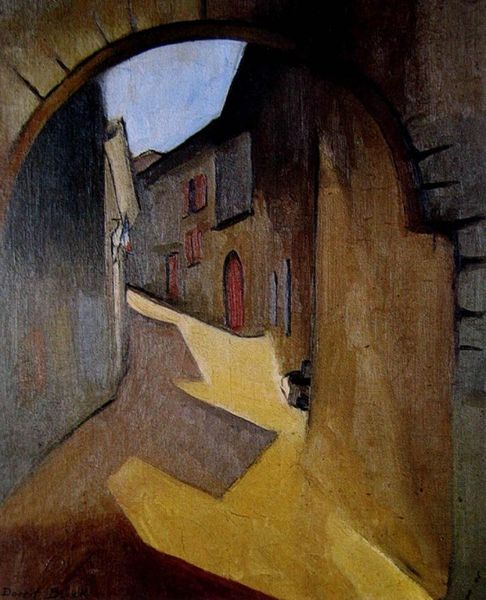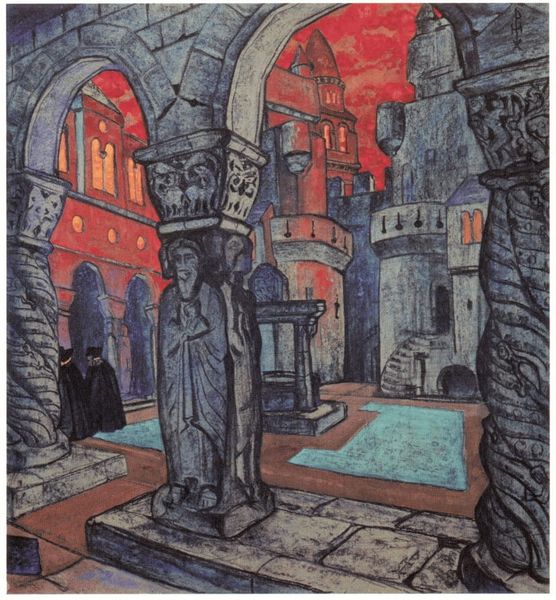
painting, watercolor
#
medieval
#
painting
#
landscape
#
holy-places
#
urban cityscape
#
watercolor
#
arch
#
symbolism
#
building
Copyright: Public domain
Curator: So, here we have Nicholas Roerich’s "In a Monastery," painted in 1914. Editor: Wow, that’s... intensely blue. And all those stones! They feel like they’re breathing. Curator: He does achieve an almost dreamlike, otherworldly atmosphere, doesn't he? Roerich was fascinated by medieval architecture and symbolism. He employed watercolor here to create a landscape imbued with the gravity of holy places, where everything almost becomes a living part of this historical setting. Editor: It's incredible how the materials themselves—stone and metal—speak volumes about labor and purpose. I'm also stuck on how watercolor gives a very immediate feel, even though we're looking at such old forms and methods. Curator: Right, the very texture of watercolor, its transparency, is able to provide depth here. Speaking to materiality, I read somewhere that Roerich experimented with tempera emulsions, which have this egg-yolk binding agent—apparently to speed drying time so his color blending and symbolic style are all in synch, as it seems. Editor: Tempera would definitely affect the look and longevity of the pigment! The light and shadow almost look carved, like those faces decorating the top of the arched entryway to the doors, bringing our attention directly into the architecture's construction. Curator: You can almost imagine the artist’s careful planning. In this case, there is a lonely, kneeling woman by the doorway who may symbolize humility and supplication in these rough, yet glorious surroundings. Editor: I'm drawn to the idea of craftsmanship here – that religious devotion connects to an artistic one, too, if we consider this kind of masonry. I am certain Roerich gave such thought. Curator: Perhaps it’s this focus on the craft and spiritual meaning that transcends time and artistic "value," however one measures it. Editor: Yes. I will never be able to look at it in a vacuum—what it cost to create—so Roerich's approach has brought me a deeper perspective on what sacred space truly represents for individuals and communities.
Comments
No comments
Be the first to comment and join the conversation on the ultimate creative platform.
